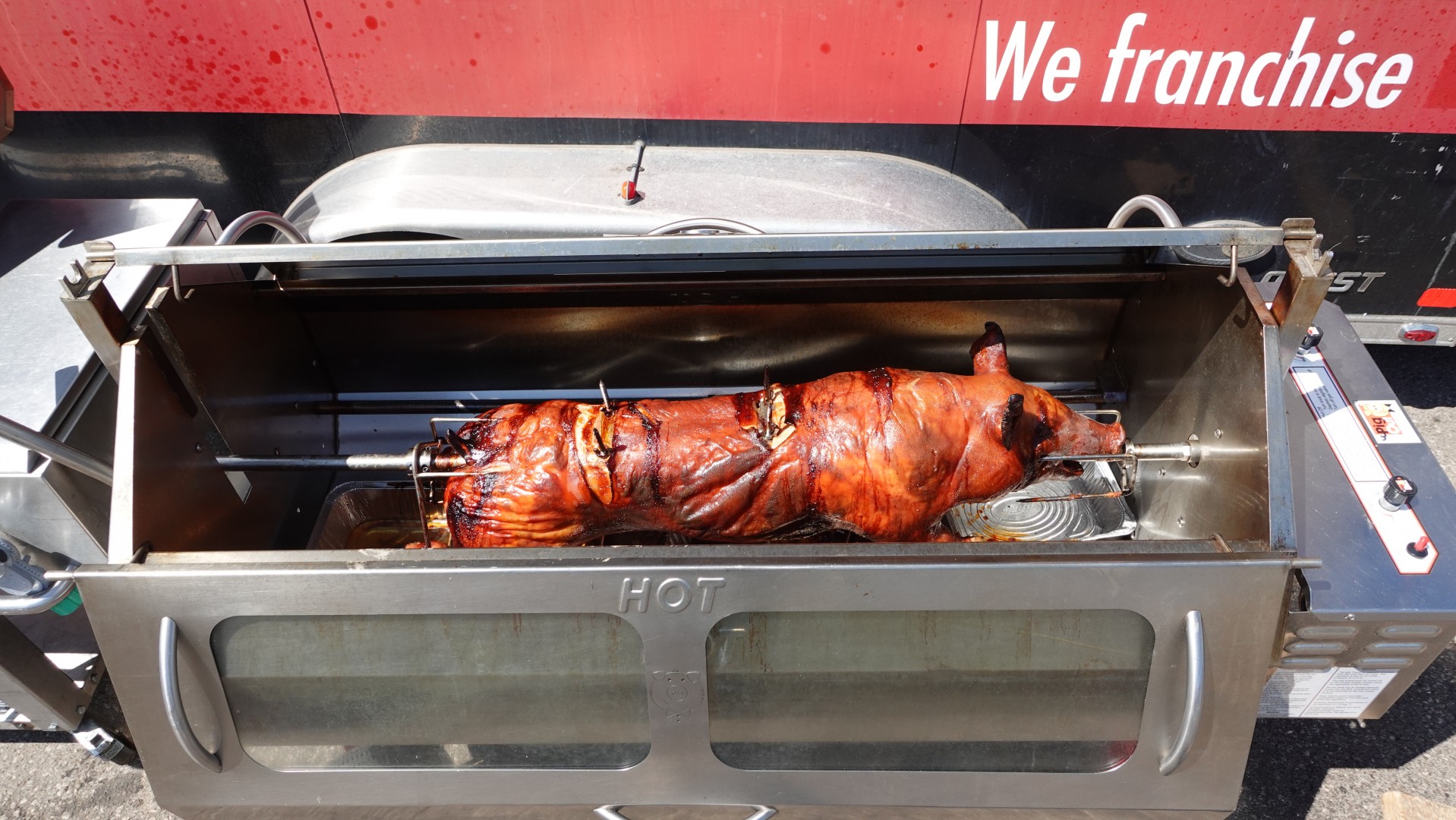
Our Propane Roaster is designed to alleviate the stress that pig roasts once brought. Even though you can practically set it and forget it, you must ensure that you complete the necessary steps so that your roast is perfect every time. Here are 9 things to avoid when roasting a pig in your Propane Roaster.
- Choosing the wrong pig: Picture this, you are at your event, fired up the roaster, the smell is in the air, guests are lining up, and suddenly you reach down to serve the next guest and you’re out of pork. You look up to see that the line has not gotten any shorter. This is a nightmare I do not want to be a part of. Ensuring you choose the right pig for the event you are catering or hosting is possibly the most important thing to remember. To avoid this ego-shattering event, aim to purchase a pig that equates to 1 lb of raw meat for every person eating. As an example, if there are 50 people eating then aim for a minimum of a 50lb pig. You can make slight changes depending on the crowd, but this is a rule of thumb.
- Not cleaning the pig properly: Before you do anything, it is very important to clean the pig thoroughly inside and out. You must remove any dirt or debris for optimal flavour and texture to be achieved. In most cases your local butcher will do this for you but in case this is not done, do a once-over to make sure. Nothing worse than diving into your pulled pork to find it crunchy.
- Not applying enough seasoning: To produce the best-tasting pig possible you should season the pig thoroughly inside and out. We recommend using plenty of salt and pepper so that you still get the delicious pork flavour in every bite. Of course, if you would like to use your own seasonings to create your own masterpiece you can. Keep in mind that regardless of what you season your pig with you must not be frugal. Apply lots and rub it in for the best results.
- Not securing the pig properly: Every pig is slightly different and for this reason, ensuring that you secure the pig properly every time is extremely important. As the pig cooks, the strength will decline meaning that you will not know how secure the pig is on the poll until the roaster is done.
- Not Monitoring the temperature: We always say, “Set it and forget it”, but of course, there are limits to that. Our roaster is significantly less labour-intensive, but you must check in on the pig during the roast. Ensuring the temperature is set correctly can be the deciding factor between a great and horrible meal. Our Propane Roaster has individual temperature controls along with a thermometer so that you can dial in your desired temperature.
- Not using the right equipment: Ensuring you use the proper equipment can make or break your pig roast. As I mentioned above, you must secure the pig adequately for the best results. This can only be done if you are using all the accessories provided. You may want to use DIY attachments with our Propane Roaster but the problem with this is that we cannot guarantee a perfect roast. Every component was designed to work together and if you combine outside accessories, it will prevent the entire system from working together.
- Not giving the pig enough time to cook: Our roaster has industry-leading cook time with a rate of 20 lbs per hour. This is already nearly twice as fast as conventional pig roasting techniques. We have all heard the saying, “Great things take time”. Don’t rush the process and enjoy being with friends, and family, or conversing with your guests. If you own a food service business this is also incredibly valuable because you can roast the entire pig and prep the rest of your meal by yourself further cutting costs and increasing your margins.
- Not using a high enough gas setting: Depending on what your goal is you will want to have varying heat levels within your roaster. If you are looking to roast at 20lb/hour you must set the gas gauges to medium/high. If you are looking for a low and slow roast, then set your gas controls on low. Regardless of what you are looking for you should know that reaching a minimum internal temperature of 165*F is required perfectly roasted pork.
- Not basting the pig properly: Basting your pig with flavourful liquid during the cooking process will help to keep it moist and prevent it from drying out. Luckily for you, our Propane Roaster can baste your pig as it cooks. The rotisserie spins which allows the juices from the pig to render and distribute throughout the pig. If you try to roast a pig on a non-rotisserie system you will need to baste to prevent drying.
- Not resting the pig before carving: After the pig is finished cooking, it is essential to let it rest for at least 30 minutes before carving. This will allow the juices to redistribute throughout the meat creating a juicy and flavourful end-product. This will allow the meat to cool down and prevent burns.
In conclusion, roasting a pig is considerably easier than what it once was but there are delicate processes that require careful attention to detail. By avoiding these 10 common mistakes, you’ll be well on your way to a party-wowing and delicious pig roast. Please consider clicking the links below to be the first to see new posts on our products, recipes, promotions, and content from our machines.
- Click here for a video with more information on our Propane Roaster
- Click here to view general info on Instagram
- Click here to join our Facebook family
- Click here for business insight on LinkedIn

